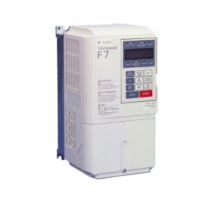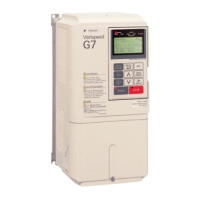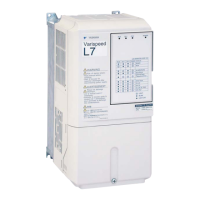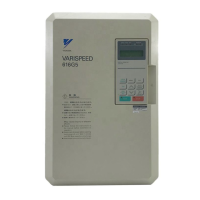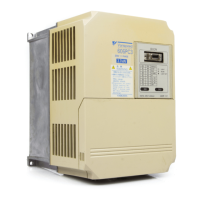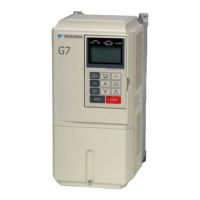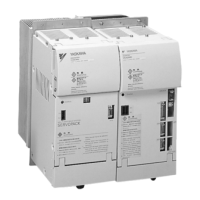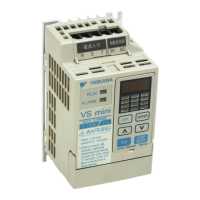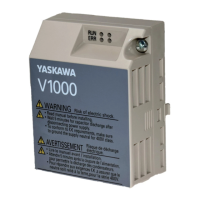4-10
• The status of the multi-function inputs and multi-function outputs will be as shown in the following table
during autotuning. When performing autotuning with the motor connected to a load, be sure that the hold-
ing brake is not applied during autotuning, especially for conveyor systems or similar equipment.
• To cancel autotuning, always use the STOP Key on the Digital Operator.
Setting the Autotuning Mode
Rotational Autotuning (T1-01 = 0)
Rotational autotuning is used only for open-vector control. Set T1-01 to 0, input the data from the nameplate,
and then press the RUN Key on the Digital Operator. The Inverter will stop the motor for approximately
1 minute and then set the required motor constants automatically while operating the motor for approximately
1 minute.
Stationary Autotuning (T1-01 = 1)
Stationary autotuning is used for open-vector control or flux vector control. Set T1-01 to 1, input the data from
the nameplate, and then press the RUN Key on the Digital Operator. The Inverter will supply power to the sta-
tionary motor for approximately 1 minute and some of the motor constants will be set automatically. The
remaining motor constants E2-02 (Motor rated slip) and E2-03 (Motor no-load current) will be set automati-
cally the first time operation is started in drive mode.
To perform an operation immediately after stationary autotuning, use the following procedure under the rec-
ommended conditions.
1. Check the values of E2-02 and E2-03 in verify mode or advanced programming mode.
2. Run the motor once in drive mode under the following conditions.
• The Inverter and the motor are connected.
• The motor shaft is not locked with a mechanical brake or other stopping mechanism (or function).
• A motor-load ratio of 30% or less is maintained.
• A speed of 30% or more of the base frequency set at E1-06 (default = highest frequency) is maintained
at a constant speed for one second or more.
3. After stopping the motor, check the values of E2-02 and E2-03 again in verify mode or advanced program-
ming mode. If the values of E2-02 and E2-03 differ from the ones before the first operation was carried
out, the settings have been successfully completed. Next, check if the values are suitable or not.
If the values of E2-02 and E2-03 differed greatly from the reference data of the motor in the test report or the
instruction manual, hunting, motor vibrations, insufficient motor torque, or an overcurrent may occur because
the motor is operated although the aforementioned conditions have not been fulfilled after stationary
autotuning. For elevators, failure to observe this caution may result in the cage falling or injury. If so, perform
Tuning Mode Multi-function Inputs Multi-function Outputs
Rotational autotuning Do not function.
Same as during normal
operation
Stationary autotuning Do not function.
Maintain same status as
when autotuning is started.
Stationary autotuning for line-
to-line resistance only
Do not function.
Maintain same status as
when autotuning is started.
IMPORTANT
1. Power will be supplied to the motor when stationary autotuning is performed even though the motor
will not turn. Do not touch the motor until autotuning has been completed.
2. When performing stationary autotuning connected to a conveyor or other machine, ensure that the
holding brake is not activated during autotuning.
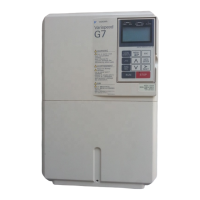
